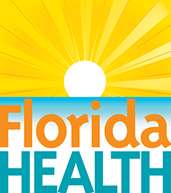It's a New Day in Public Health.
The Florida Department of Health works to protect, promote, and improve the health of all people in Florida through integrated state, county, and community efforts.
Florida Birth Defects Registry Data
Florida Birth Defects Registry
The Florida Birth Defects Registry is a statewide, population-based surveillance system that is used to identify infants with birth defects born to Florida mothers. The registry utilizes and links multiple administrative datasets, including vital statistics and hospital discharge records, to identify any infant (born after January 1, 1998) with a structural, genetic, or other specified birth outcome that can adversely affect the infant’s health or development diagnosed within the first year of life.
The Florida Department of Health (DOH) is the only agency in Florida with authority to create confidential disease registries in accordance with section 381.0031, Florida Statutes. Although information on birth defects can be found in multiple data sets, the registry is the only data source where data are combined with other demographic, clinical, and maternal and child health information for analysis and reporting on the occurrence of birth defects in Florida.
Data on trends, risk factors, costs, access to services, and effectiveness of prevention programs are analyzed and interpreted for use by key stakeholders, including health policy leaders, county health departments, child health advocates, health care providers and researchers.
The data helps anticipate resource needs and secure funding for services. These data also help guide public health professionals in targeting areas and populations in which primary prevention activities would make the largest difference in the lives of infants and families.
Surveillance activities are important for tracking the occurrence of birth defects and identifying trends, developing and evaluating prevention programs, assisting families with referral for services, identifying potential risk factors, supporting epidemiological investigations, fostering collaborative studies, and shaping research.
- National Trends
- Surveillance Authority and Methodology
- State Characteristics
- State Birth Defects Profile
- Limitations
- Maternal Age and Down Syndrome
- Neural Tube Defects and Race
- Appendices
In the U.S., birth defects are one of the leading causes of death for children under one year of age.
- It is estimated that one in every five infant deaths occurs due to birth defects.
- According to the National Birth Defects Prevention Network, 1 in 33 infants is affected by one or more birth defects. This translates into one infant born with a birth defect every four and a half minutes.
Surveillance Authority
In 1997, the DOH received funding to operate and manage a statewide birth defects registry in response to the public’s ongoing concern about birth defects and environmental hazards.
In 1999, congenital malformations were added to Florida’s official list of reportable diseases/conditions, establishing the legal authority to conduct birth defects surveillance.
Surveillance Methodology
The registry is a comprehensive, unduplicated inventory of birth defect cases in Florida. The registry is constructed using a hierarchical, stepwise linking algorithm to link records from administrative data sources to birth and death certificates.
Although the case ascertainment data sources have changed over time due to availability or funding restrictions for some data sets, or the addition of new, reliable data sets, the Florida Birth Defects Registry has leveraged the follow data sources:
- Agency for Health Care Administration inpatient, outpatient, and emergency department hospital discharge records
- Florida Bureau of Vital Statistics infant death records



Connect with DOH